36th Field Artillery Group
18th Field Artillery
______________________________________
______________________________________
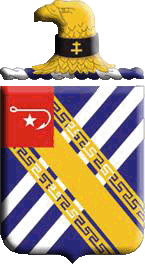
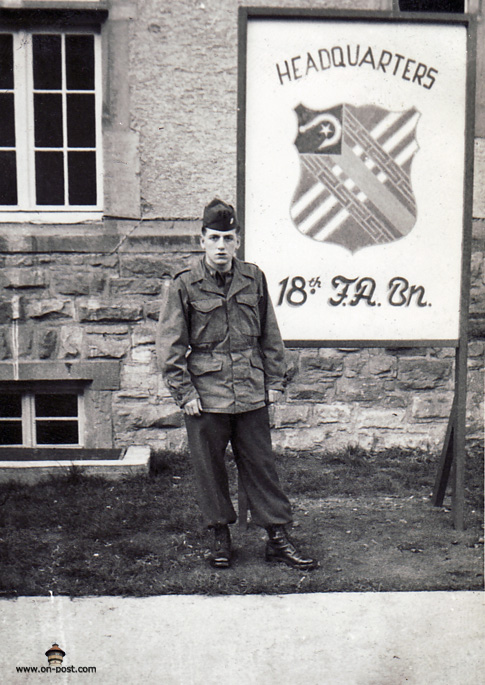
HQ 18th Field Artillery
18th Field Artillery Regiment 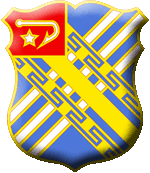 Distinctive Unit Insignia DescriptionA gold color metal and enamel device 1 1/16 inches (2.70 cm) in height consisting of a shield blazoned: Azure, three bendlets sinister Argent, a bend double-cottized potente counter-potente Or; on a canton Gules a mullet within a fish-hook fesswise, ring to dexter and barb to base, of the second (for the 5th Field Artillery). Symbolism The shield is the shoulder patch of the 3rd Division, the bend and bendlets are from the arms of Champagne. The canton indicates the parentage of the regiment. The fishhook and Star are from the coat of arms of the 5th Field Artillery; the union battle line of Gettysburg was in the shape of a fishhook and the corps badge of Slocum’s 12th Corps was a star. Background The distinctive unit insignia was originally approved for the 18th Field Artillery Regiment on 2 October 1923. It was amended to correct the method of wear on 25 May 1925. It was amended to correct the blazon on 12 July 1928. It was redesignated for the 18th Field Artillery Battalion on 4 September 1943. The insignia was redesignated for the 18th Artillery Regiment on 18 November 1958. It was again redesignated for the 18th Field Artillery Regiment effective 1 September 1971.  Coat Of Arms Blazon Shield Azure, three bendlets sinister Argent, a bend double-cottized potente counter-potente Or; on a canton Gules a mullet within a fish-hook fesswise, ring to dexter and barb to base, of the second (for the 5th Field Artillery). Crest On a wreath of the colors Argent and Azure an eagle’s head erased Or gorged with a collar Sable charged with a Lorraine cross of the first. Motto PER ASPERA AD ASTRA (Through Difficulties to the Stars). Symbolism Shield The shield is the shoulder patch of the 3rd Division, the bend and bendlets are from the arms of Champagne. The canton indicates the parentage of the regiment. The fishhook and Star are from the coat of arms of the 5th Field Artillery; the union battle line of Gettysburg was in the shape of a fishhook and the corps badge of Slocum’s 12th Corps was a star. Crest The crest is from the coat of arms of St. Mihiel. Motto The motto is an extract from the citation received by the 18th. Background The coat of arms was originally approved for the 18th Field Artillery Regiment on 18 May 1923. It was amended to correct the blazon on 12 July 1928. It was redesignated for the 18th Field Artillery Battalion on 4 September 1943. The insignia was redesignated for the 18th Artillery Regiment on 18 November 1958. It was again redesignated for the 18th Field Artillery Regiment effective 1 September 1971. |
| The history of the 18th Field Artillery 1776 - 1954  THE many achievements and undertakings of the 18th Field Artillery Battalion since its conception thirty-seven years ago have given it an enviable reputation. Parent unit of the 18th was known as the "New York Company of Artillery," founded on 6 January 1776, when the Provincial Congress of New York voted to raise a company of artillery. Alexander Hamilton was its first commander, and its troops fought bravely in the Revolutionary War. On 7 March 1821, redesignated as Company F, Fourth U.S. Artillery, the company provided protection for settlers on the Western Frontier, and also fought in the war with Mexico. Still later, Company F was redesignated Battery F and under its new name, fought in the Civil War. At the famed Battle of Gettysburg, Battery F was in support of General Slocum's XII Corps. This engagement is of significance to the 18th in that its present day shield commemorates that action. The fish-hook in the upper left hand corner of the shield is representative of the shape of the Union battle lines, and the star appearing in conjunction with the fish-hook was taken from the insignia of General Slocum's XII Corps. On 21 April 1901, after having participated in the war with Spain and serving a tour in the Philippines, Battery F was redesignated the 8th Battery, U.S. Field Artillery. On 1 June 1907, the 8th Battery became Battery D of the 5th Field Artillery Regiment. Shortly after the United States became involved in World War I, a cadre of officers and men of Battery D was sent to Fort Bliss, Texas, as the nucleus of the 1st Battalion, 18th Field Artillery Regiment. The initial organization was dated 1 June 1917, and the Battalion's primary weapon was a horse-drawn 155mm howitzer. It was this Battalion which was destined to become the unit known today as the 18th Field Artillery Battalion, and from which the 18th derives its present official battle honors and lineage. The 18th went overseas in April 1918, and so effectively did it contribute to Franco-American success in the second Battle of the Marne, the French Government awarded the unit the Croix de Guerre. From the citation which came with the decoration, the present battalion motto is taken: "Per aspera ad astra"—Through difficulties to the stars. In its months of combat in World War I, the Battalion earned battle honors in the campaigns of Champagne-Marne, Aisne-Marne, St. Mihiel, Meuse- Argonne and Champagne. Upon termination of fighting, the 18th remained in Germany for occupation duty, and at that time, exchanged its horses for trucks and tractors, becoming completely motorized. In the summer of 1919 the 18th stood its last full formation of World War I at Camp Merit, New Jersey. Re-activation took place at Fort Sill, Oklahoma, in 1922, and for many years, the 18th served as school troops for the Field Artillery School. On 1 March 1943 the 1st Battalion, 18th Field Artillery Regiment was redesignated the 685th Field Artillery Battalion, but it remained under its old Regimental Headquarters, redesignated 18th Field Artillery Group. The Battalion began preparation for war-time duties at Camp Gordon, Georgia in June 1943, and on 9 August 1943, was again redesignated, this time as the 18th Field Artillery Battalion. After participation in many maneuvers and tests, the 18th crossed the Atlantic and landed at Wales. It proceeded to Walsall, England, which became its permanent station there. The Battalion landed at Utah Beach, France on 5 July 1944, and was assigned to First Army, attached to VIII Corps, and further attached to the 8th Infantry Division. Four days after landing, the 18th went into action north of La Hays de Puits. Late in 1945 the 18th returned to the United States and inactivated 3 March 1946 at Camp Kilmer, New Jersey. Its World War II battle record included the campaigns of Normandy, Northern France, Ardennes, Central Europe and the Rhine-land, during which it traveled 7,420 miles since the Normandy landing. It had been attached to two armies, eight corps, sixteen divisions, and one cavalry group in its mission as a separate light field artillery battalion and a 4.5 rocket battalion. On August 1, 1946 the Battalion was again reactivated as a 155mm Gun Battalion (SP), and in mid-1951, following the outbreak of hostilities in Korea, was again ordered to Europe to augment troops of the Seventh Army. It proceeded to its permanent station at Babenhausen, Germany, and at first lived in a tent camp until rehabilitation of the kaserne's buildings was completed in December of 1951. During its three years in Germany on this tour, the 18th is justly proud of its standing at the top of similar units in the Seventh Army which is universally credited with having the best-trained troops in the history of the United States Army. source: 36th FA GP yearbook |
All photos © 36th FA GP
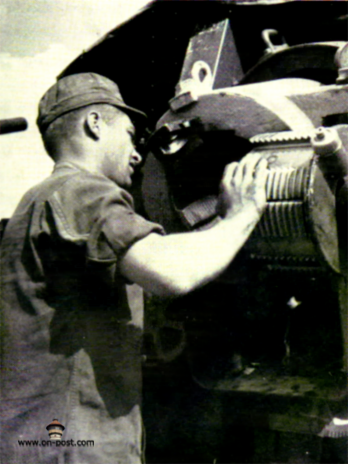
Pvt Sherman Brot Able Battery gun section
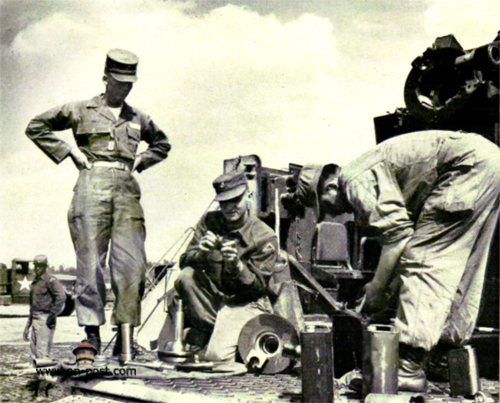
A Breech block of a 155mm gun is disassembled by
Sgt. Wallace Tidewell, Cpl. Brackenrich and Pvt. Stebbins, all of Baker Battery
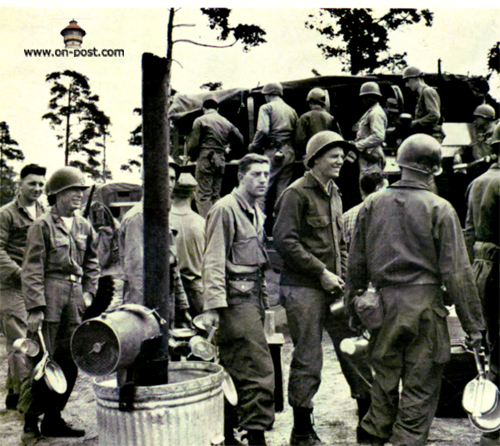
At the "field resturant"
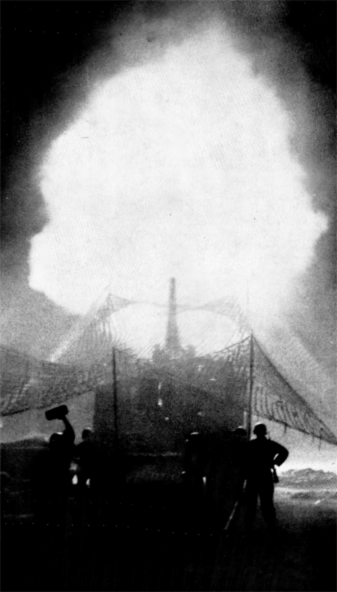
The big blast at night
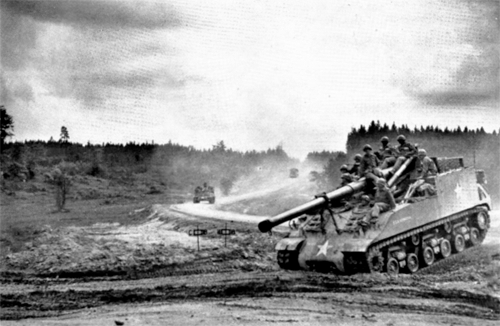
Guns move into position during a Battalion test at Grafenwoehr
________________________________
All photos © HGV Babenhausen
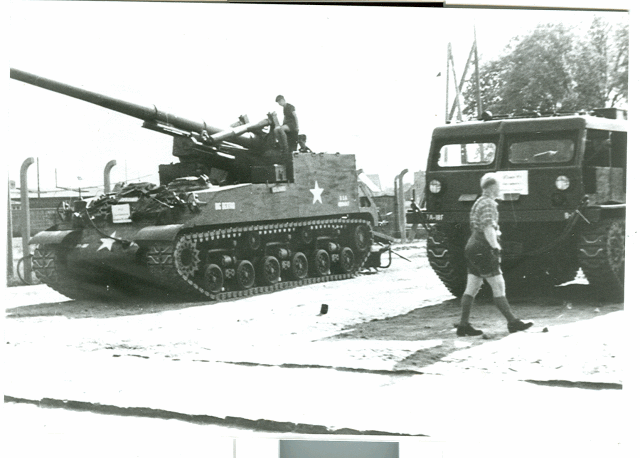
German spectators inspect a M 40, 155mm howitzer and a M4 cargo carrier on display at Babenhausen Kaserne, sometime in the late 50's

M 40 Howitzers at the Babenhausen Motorpool
-1956-
-1956-
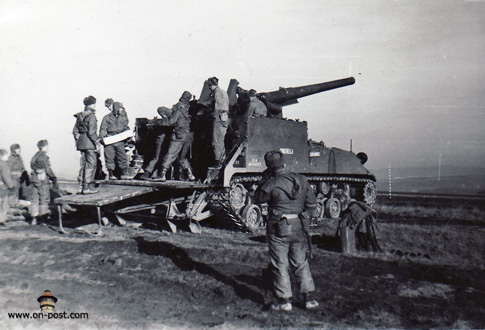
18th FA M40 SP Howitzers at Graf
-1956-
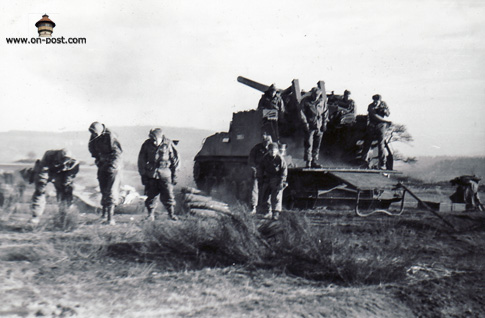
-1956-

155mm on the way
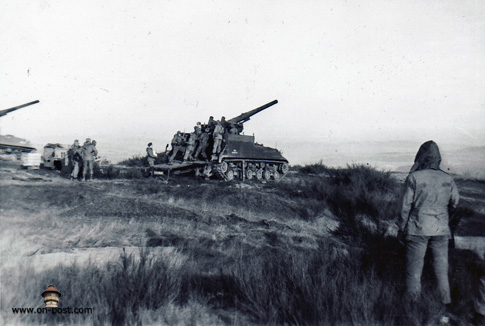

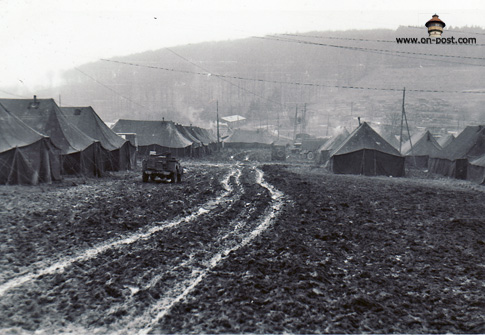
A muddy Graf in 1956
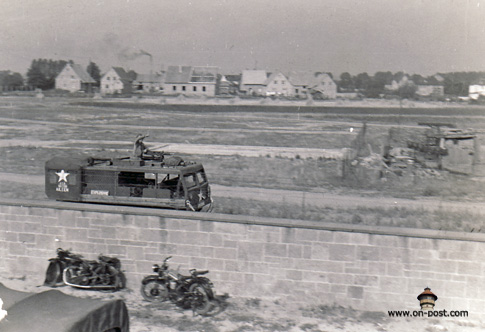
A 18th FA M4 Cargo Carrier rumbels past the Kasernes outer wall.
-1955-
-1955-
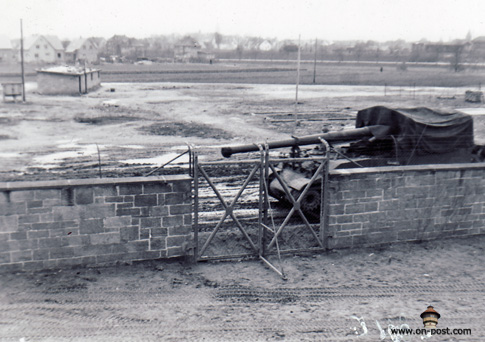
A M40 on the way back to the track park.
-1955-
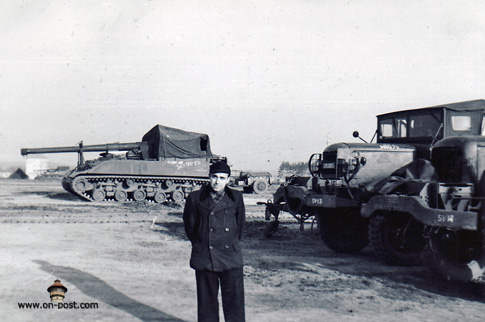
-1955-

___________________________________________________
Graphics, Articles and photos on this web site are posted by permission of their owners and are for viewing only. They are not for general distribution, nor for use on other websites, unless permitted by the web master or the original owner. If you find any files on this site that you believe are unauthorized, please contact the web master immediately so that the issue can be resolved.
___________________________________________________